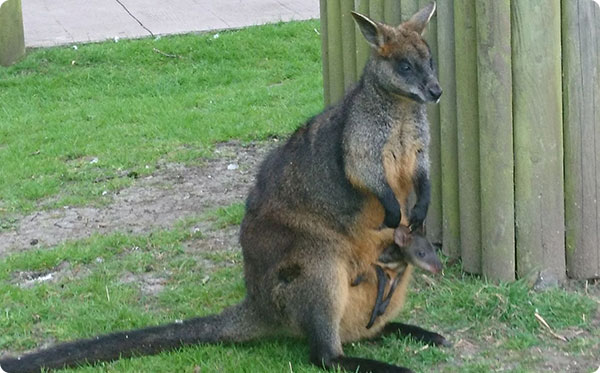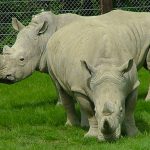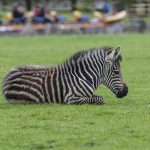Wallaby Baby Boom!

It has been an exciting month for new arrivals here at the zoo in particular our Australia section has seen some little ones emerge from their mother pouches and take their first hops around their home. Within our Australia section we have a wallaby walkway that is home to Parma wallabies and Swamp wallabies. Our swamp wallabies now have four Joeys at different stages in their development. Two have been seen moving around within in the pouch, another has their head poked out while another is already out on the move with their mother!
As our wallabies are Australian mammals, they are classed as marsupials. The females within this specific group of animals give birth to young joey about the size of a baked bean! This joey then has to make its way to its mothers pouch for it to continue growing and developing for about 9 months. After this time it will begin to spend increasing amounts of time away from the pouch, gaining confidence and discovering different items of food to eat. It will then become fully independent after around another 4 months. If the female wallaby becomes pregnant again while the joey is still in her pouch, the embryo’s development will pause until the joey leaves the pouch, a phenomenon called embryonic diapause!
Our two species of wallaby are distinguishable either by their size or colour. The Parma wallaby are the smallest species of wallaby so they may look like joeys but they are actually fully grown adults and the swamp wallabies have rust-coloured bellies.
These wallabies also share their enclosure with humans too whilst the zoo is open! The design of this enclosure allows visitors to walk through and meander along a path, which goes around the outskirts. This provides the wallabies with a large enclosure, which they are free to roam around, but also gives visitors chance to see these amazing animals up close, without their vision being restricted by a barrier.
Their diet consists of a range of plants including shrubs, crops and pasture. It also seems to be able to tolerate plants that are toxic to other animals such as bracken, lantana and hemlock. Most wallabies have adapted to be grazers and eat grass, however the swamp wallabies tooth structure indicates that they are more browsers then grazers. Here at the zoo they receive a range of plants, vegetables and specialised pellets. In the wild they are classed as least concern with their numbers and populations well controlled.


